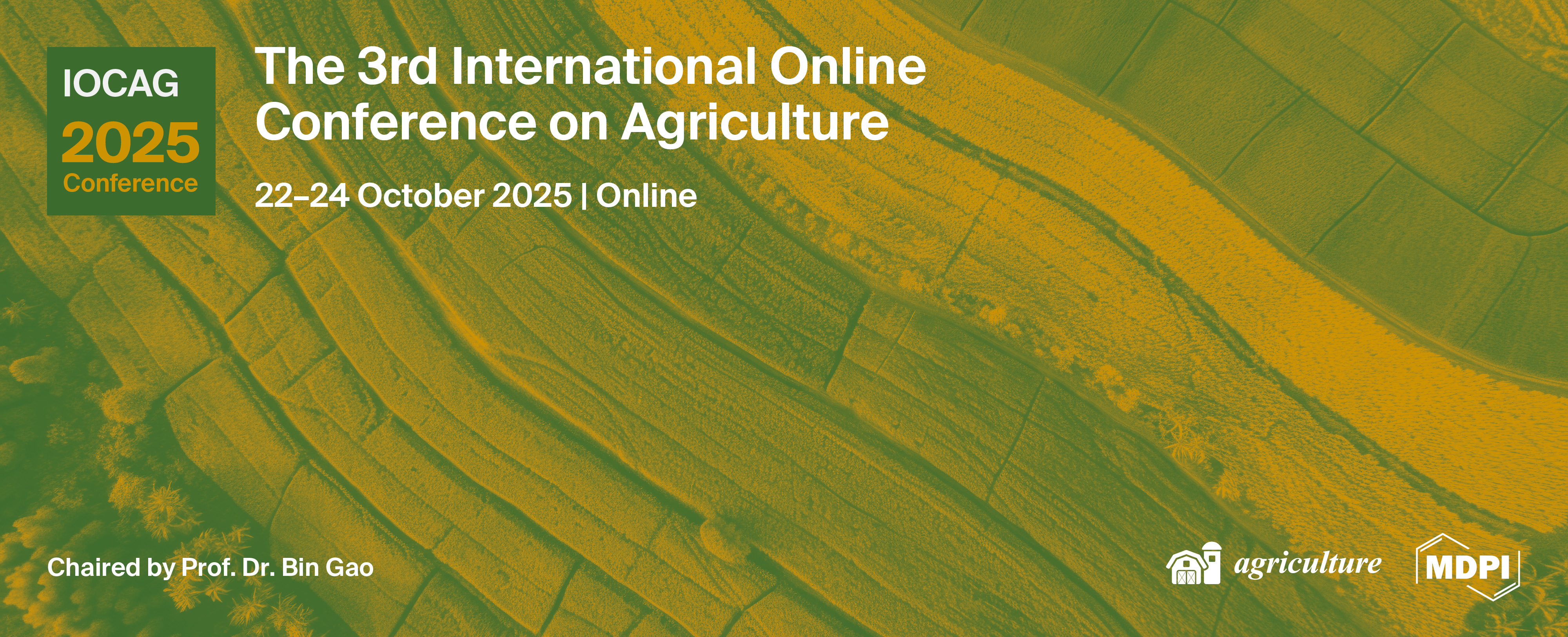-
 Soil Microarthropods as Tools for Monitoring Soil Quality: The QBS-ar Index in Three European Agroecosystems
Soil Microarthropods as Tools for Monitoring Soil Quality: The QBS-ar Index in Three European Agroecosystems -
 Characterisation of the Pathogenicity of Beauveria sp. and Metarhizium sp. Fungi Against the Fall Armyworm, Spodoptera frugiperda (Lepidoptera: Noctuidae)
Characterisation of the Pathogenicity of Beauveria sp. and Metarhizium sp. Fungi Against the Fall Armyworm, Spodoptera frugiperda (Lepidoptera: Noctuidae) -
 From Reality to Virtuality: Revolutionizing Livestock Farming Through Digital Twins
From Reality to Virtuality: Revolutionizing Livestock Farming Through Digital Twins -
 The Nutritional Benefits and Sustainable By-Product Utilization of Chestnuts: A Comprehensive Review
The Nutritional Benefits and Sustainable By-Product Utilization of Chestnuts: A Comprehensive Review -
 Harnessing AI-Powered Genomic Research for Sustainable Crop Improvement
Harnessing AI-Powered Genomic Research for Sustainable Crop Improvement
Journal Description
Agriculture
Agriculture
is an international, scientific peer-reviewed open access journal published semimonthly online by MDPI.
- Open Access— free for readers, with article processing charges (APC) paid by authors or their institutions.
- High Visibility: indexed within Scopus, SCIE (Web of Science), PubAg, AGRIS, RePEc, and other databases.
- Journal Rank: JCR - Q1 (Agronomy) / CiteScore - Q1 (Plant Science)
- Rapid Publication: manuscripts are peer-reviewed and a first decision is provided to authors approximately 19.2 days after submission; acceptance to publication is undertaken in 1.9 days (median values for papers published in this journal in the second half of 2024).
- Recognition of Reviewers: reviewers who provide timely, thorough peer-review reports receive vouchers entitling them to a discount on the APC of their next publication in any MDPI journal, in appreciation of the work done.
- Companion journals for Agriculture include: Poultry, Grasses and Crops.
Impact Factor:
3.3 (2023);
5-Year Impact Factor:
3.5 (2023)
Latest Articles
Comparative Analysis of CNN-Based Semantic Segmentation for Apple Tree Canopy Size Recognition in Automated Variable-Rate Spraying
Agriculture 2025, 15(7), 789; https://doi.org/10.3390/agriculture15070789 (registering DOI) - 6 Apr 2025
Abstract
Efficient pest control in orchards is crucial for preserving crop quality and maximizing yield. A key factor in optimizing automated variable-rate spraying is accurate tree canopy size estimation, which helps reduce pesticide overuse while minimizing environmental and health risks. This study evaluates the
[...] Read more.
Efficient pest control in orchards is crucial for preserving crop quality and maximizing yield. A key factor in optimizing automated variable-rate spraying is accurate tree canopy size estimation, which helps reduce pesticide overuse while minimizing environmental and health risks. This study evaluates the performance of two advanced convolutional neural networks, PP-LiteSeg and fully convolutional networks (FCNs), for segmenting tree canopies of varying sizes—small, medium, and large—using short-term dense-connection networks (STDC1 and STDC2) as backbones. A dataset of 305 field-collected images was used for model training and evaluation. The results show that FCNs with STDC backbones outperform PP-LiteSeg, delivering superior semantic segmentation accuracy and background classification. The STDC1-based model excels in precision variable-rate spraying, achieving an Intersection-over-Union of up to 0.75, Recall of 0.85, and Precision of approximately 0.85. Meanwhile, the STDC2-based model demonstrates greater optimization stability and faster convergence, making it more suitable for resource-constrained environments. Notably, the STDC2-based model significantly enhances canopy-background differentiation, achieving a background classification Recall of 0.9942. In contrast, PP-LiteSeg struggles with small canopy detection, leading to reduced segmentation accuracy. These findings highlight the potential of FCNs with STDC backbones for automated apple tree canopy recognition, advancing precision agriculture and promoting sustainable pesticide application through improved variable-rate spraying strategies.
Full article
(This article belongs to the Special Issue Agricultural Machinery and Technology for Fruit Orchard Management)
►
Show Figures
Open AccessArticle
Time-Series Transcriptome Analysis of the European Plum Response to Pathogen Monilinia fructigena
by
Raminta Antanynienė, Monika Kurgonaitė, Ingrida Mažeikienė and Birutė Frercks
Agriculture 2025, 15(7), 788; https://doi.org/10.3390/agriculture15070788 (registering DOI) - 6 Apr 2025
Abstract
European plum production is affected by mostly harm Monilinia spp., causing full pathogen brown-rot infections. The plums are the susceptible to the Monilinia fructigena pathogen, which is the most common in Europe. This study aims to analyze the gene expression profiles and signaling
[...] Read more.
European plum production is affected by mostly harm Monilinia spp., causing full pathogen brown-rot infections. The plums are the susceptible to the Monilinia fructigena pathogen, which is the most common in Europe. This study aims to analyze the gene expression profiles and signaling pathways of the European plum, cv. Victoria, inoculated with the M. fructigena pathogen at 24, 48, and 72 h post inoculation. By transcriptome sequencing, the number of differentially expressed genes (DEGs) increased over time, with the highest number at 72 hpi, showing the tendency to involve more genes in the response to prolonged exposure to the pathogen. Pathogenesis-related (PR) family and mildew resistance locus O (MLO-like) proteins were expressed the most during plum response to the pathogen. The plum initiates complex defense responses by significantly activating 23 pathways according to Kyoto Encyclopedia of Genes and Genomes (KEGG). In this study, expressed genes over the infection were in response to stress, defense, cell death, and disease resistance. The findings of this study could be used as the basis for further research of markers linked to resistance or susceptibility to disease in plum hybrids at an early age, which will improve the plum breeding process.
Full article
(This article belongs to the Special Issue The Conservation and Management of Agro- and Forest Ecosystems in a Changing Climate)
►▼
Show Figures

Figure 1
Open AccessArticle
Dual Environmental Regulation and Carbon Emission Reduction in Pig Breeding Industry: Synergistic Effect or Crowding-out Effect? Evidence from China
by
Yue Wang, Xiaomei Qu, Hui Zhang, Kai Wang, Zhanpeng Qu, Ning Li and Yufeng Wang
Agriculture 2025, 15(7), 787; https://doi.org/10.3390/agriculture15070787 (registering DOI) - 5 Apr 2025
Abstract
The prohibition zone policy restricts certain activities in specific areas to protect the environment, while the emission permit policy allows companies to trade emissions permits as a market-based approach to regulation. Can the two policies jointly promote the carbon emission reduction of the
[...] Read more.
The prohibition zone policy restricts certain activities in specific areas to protect the environment, while the emission permit policy allows companies to trade emissions permits as a market-based approach to regulation. Can the two policies jointly promote the carbon emission reduction of the pig breeding industry (PBI)? Based on the panel data of 31 provinces and cities in China from 2010 to 2020, this paper adopts propensity score matching and multi-period difference-in-differences (PSM-DID) models to study the impact of the dual policy of the prohibition zone and emission permit on the carbon emissions of the PBI. Our theoretical and empirical findings suggest that the dual policy significantly reduces carbon emissions in the PBI. A mediating analysis reveals that industrial structure and government penalties regulate the impact of the dual policy. Further analysis shows that the prohibition zone policy and the emission permit policy play a synergistic role in the impact on the carbon emissions of the PBI. Regional heterogeneity is also explored, indicating that the carbon emission reduction effect is more significant in western China. Policy implementers should fully consider various policies, regional differences, and regulatory factors, formulating complementary policy combinations to jointly promote the green new quality productivity of the PBI.
Full article
(This article belongs to the Special Issue New Challenges and Trends in Agri-Environmental Management: Accomplishment of Sustainable Development Goals)
►▼
Show Figures

Figure 1
Open AccessArticle
The Effect of New Zeolite Composites from Fly Ashes Mixed with Leonardite and Lignite in Enhancing Soil Organic Matter
by
Renata Jarosz, Joanna Beata Kowalska, Krzysztof Gondek, Romualda Bejger, Lilla Mielnik, Altaf Hussain Lahori and Monika Mierzwa-Hersztek
Agriculture 2025, 15(7), 786; https://doi.org/10.3390/agriculture15070786 (registering DOI) - 5 Apr 2025
Abstract
The aim of this study was to evaluate the influence of innovative mineral–organic mixtures containing zeolite composites produced from fly ashes and lignite or leonardite on the fractional composition of soil organic matter in sandy loam soil under two-year pot experiments with maize.
[...] Read more.
The aim of this study was to evaluate the influence of innovative mineral–organic mixtures containing zeolite composites produced from fly ashes and lignite or leonardite on the fractional composition of soil organic matter in sandy loam soil under two-year pot experiments with maize. The fractional composition of soil organic matter (SOM) was analyzed and changes in the functional properties of soil groups were identified using the ATR-FTIR method. Changes in the content of phenolic compounds were assessed, and the potential impact of fertilizer mixtures on soil carbon stocks was investigated. The addition of these mixtures improved the stability of SOM. The application of mineral–organic mixtures significantly increased the total organic carbon (TOC) by 18% after the 2nd year of the experiment. The maximum TOC content in the soil was observed by 33% with the addition of MC3%Leo3% amendment. Nitrogen content in soil was increased by 62% with MV9%Leo6% additive, indicating increased soil fertility. The study highlighted an increase in fulvic acid carbon relative to humic acid carbon, signaling positive changes in organic matter quality. The new mineral–organic mixtures influence changes in specific functional groups (ATR-FTIR) present in the soil matrix, compared to mineral fertilization alone. The additive mixtures also contributed to an increase in soil carbon stocks, highlighting their potential for long-term improvement of soil fertility and carbon sequestration.
Full article
(This article belongs to the Special Issue Innovative Solutions for Sustainable Agriculture: From Waste to Biostimulants, Biofertilisers and Bioenergy)
►▼
Show Figures

Figure 1
Open AccessArticle
Assessment of the Characters of a Novel Phosphoric Acid and Mineral-Comodified Biochar Composite and Its Potential Application in Saline‒Alkali Soil Improvement
by
Hao Dai, Zhuangzhuang Liu, Jinping Yu, Xiaoming Teng, Lei Liu, Mingyun Jia and Jianhui Xue
Agriculture 2025, 15(7), 785; https://doi.org/10.3390/agriculture15070785 (registering DOI) - 5 Apr 2025
Abstract
Amending saline–alkali soils to improve agricultural productivity is critical for addressing global food security challenges. Biochar is a promising soil amendment, and its modified composites offer significant potential for soil remediation. In this study, we developed a novel phosphoric acid–mineral-comodified biochar composite for
[...] Read more.
Amending saline–alkali soils to improve agricultural productivity is critical for addressing global food security challenges. Biochar is a promising soil amendment, and its modified composites offer significant potential for soil remediation. In this study, we developed a novel phosphoric acid–mineral-comodified biochar composite for saline–alkali soil improvement. SEM and XRD analyses indicate that chemical interactions between phosphoric acid, minerals, and biochar result in the formation of distinct mineral phases on the composite surface. Furthermore, FTIR analysis reveals that these interactions give rise to functional groups such as Si-O-Si, and thermogravimetric analysis demonstrates that the modified biochar composite exhibited enhanced stability. Compared with raw biochar, the modified biochar composites exhibited significant decreases in pH, EC, and base cation content (especially Na+), with maximum reductions of 7.26 pH units, 639.5 μS/cm, and 3.69 g/kg, respectively. In contrast, the contents of P, Si, and Ca increased significantly, with maximum increases of 140.04 g/kg, 90.32 g/kg, and 114.27 g/kg, respectively. In addition, the specific surface area and pore volume of the modified biochar composite increased by up to 5.2 and 15 times, respectively. Principal component analysis indicates that mineral type was the primary factor influencing the properties of the composites: hydroxyapatite enhanced porosity and phosphorus levels, whereas kaolinite and montmorillonite increased silicon content. Pot experiments show that the modified biochar composite increased alfalfa plant height by 17.36–20.27% and shoot biomass by 107.32–125.80% in saline–alkali soils. Overall, the newly developed phosphoric acid–mineral–biochar composites were evaluated to have high application potential for saline–alkali soil amendment.
Full article
(This article belongs to the Section Agricultural Soils)
►▼
Show Figures

Figure 1
Open AccessArticle
Innovative Techniques for Managing Dollar Spot in Warm- and Cool-Season Turfgrasses: The Case of UV-B and UV-C Irradiations
by
Marco Santin, Lisa Caturegli, Lorenzo Gagliardi, Sofia Matilde Luglio, Simone Magni, Elisa Pellegrini, Claudia Pisuttu, Michele Raffaelli, Marco Volterrani and Luca Incrocci
Agriculture 2025, 15(7), 784; https://doi.org/10.3390/agriculture15070784 (registering DOI) - 5 Apr 2025
Abstract
The management of Dollar spot, the fungal disease of turfgrasses, is complicated and, today, tends to include new eco-friendly approaches. The aim of this study is to evaluate the effect of UV-B and UV-C lamps against the infection of Clarireedia species in warm-
[...] Read more.
The management of Dollar spot, the fungal disease of turfgrasses, is complicated and, today, tends to include new eco-friendly approaches. The aim of this study is to evaluate the effect of UV-B and UV-C lamps against the infection of Clarireedia species in warm- and cool-season turfgrasses. In vitro tests were performed to evaluate the growth of C. jacksonii mycelium on Potato Dextrose Agar, irradiated with UV-B and UV-C at heights of 5 and 15 cm, 5 s per day for three consecutive days. The same treatments, prolonged for seven days, were applied on naturally infected potted Agrostis stolonifera and Cynodon dactylon × C. transvaalensis, for in vivo tests. Disease severity, antioxidant capacity, and pigment content were assessed at the end of the experiment. Only UV-C reduced the growth of C. jacksonii after 48 h at 5 cm (−36%) and 72 h at both distances (−15 and −27%). Agrostis stolonifera showed symptoms, reduced by UV-C at 5 cm, and fungal structures, except in UV-C exposed samples. Total antioxidant capacity increased after UV-B exposure at 5 cm (+10%). No variations in terms of photosynthetic pigments were observed. These results confirm the potential of UV-C lamps for the containment of Dollar spot.
Full article
(This article belongs to the Section Crop Protection, Diseases, Pests and Weeds)
►▼
Show Figures

Figure 1
Open AccessArticle
The Effect of Ensiling on the Starch Digestibility Rate of Rehydrated Grain Silages in Pigs Depends on the Hardness of the Maize Hybrid
by
Kristina Kljak, Darko Grbeša and Marija Duvnjak
Agriculture 2025, 15(7), 783; https://doi.org/10.3390/agriculture15070783 - 4 Apr 2025
Abstract
The aim of the present study was to determine the in vitro starch digestibility kinetics of rehydrated maize grain silages in pigs and to investigate the relationship between the in vitro starch digestibility rate and the physical properties of the mature grain. Grains
[...] Read more.
The aim of the present study was to determine the in vitro starch digestibility kinetics of rehydrated maize grain silages in pigs and to investigate the relationship between the in vitro starch digestibility rate and the physical properties of the mature grain. Grains of seven commercial maize hybrids were harvested at physiological maturity, rehydrated, and ensiled with a commercial inoculant during different ensiling periods (0, 21, and 95 days) in five replicates using a completely randomized design. The starch digestibility rate was determined using first-order kinetics following an in vitro digestibility procedure mimicking the stomach and small intestine of pigs. The tested hybrids differed in their physical properties (test weight, kernel size, and density and hardness), digestion coefficients, and starch digestibility rate (p < 0.05). The starch digestibility rate increased with an increasing ensiling period, with average values of 0.588, 1.013, and 1.179 1/h for 0, 21, and 95 days of ensiling period, respectively. However, the effect of ensiling was more pronounced in hybrids with higher grain hardness, reaching a rate of 1.272 1/h in hybrids with higher grain hardness compared to 1.110 1/h in hybrids with lower grain hardness. In conclusion, ensiling results in higher availability of starch to digestive enzymes, and the duration of ensiling and hardness of the maize hybrid should be considered when formulating the pig diet.
Full article
(This article belongs to the Special Issue Assessment of Nutritional Value of Animal Feed Resources)
►▼
Show Figures

Figure 1
Open AccessArticle
Synergistic Reduction and Common Driving Forces of Agricultural Pollution and Carbon Emissions Based on Agricultural Grey Water Footprint
by
Hua Zhu, Qing Zhang and Junfeng Xiong
Agriculture 2025, 15(7), 782; https://doi.org/10.3390/agriculture15070782 - 4 Apr 2025
Abstract
Managing agricultural water pollution (AWP) and agricultural carbon emissions (ACE) together is crucial for addressing the global water resources crisis and climate challenges. Traditional water quality indicators are limited in large-scale evaluations of AWP. The common trends of ACE and AWP, as well
[...] Read more.
Managing agricultural water pollution (AWP) and agricultural carbon emissions (ACE) together is crucial for addressing the global water resources crisis and climate challenges. Traditional water quality indicators are limited in large-scale evaluations of AWP. The common trends of ACE and AWP, as well as the spatial heterogeneity of their common driving factors also remain unclear. This study introduces a novel framework for analyzing the synergistic reduction of AWP and ACE from the perspective of agricultural grey water footprint (AGWF) and examines disparities in common driving factors across areas with differing levels of economic development and pollution intensities in Zhejiang Province. The results indicate that ACE and AGWF in Zhejiang showed an upward trend from 2010 to 2012, followed by a significant decline from 2013 to 2020. A consistent synergistic reduction trend in grey water footprint and carbon emissions was identified in both the planting and livestock husbandry sectors across Zhejiang. Socio-economic factors jointly influenced the reductions in ACE and AGWF, with technological level and the labor-to-research-and-development (labor-R&D) ratio being the primary drivers, accounting for 79.41% and 78.38% of these reductions, respectively. The impact of agricultural R&D expenditure intensity on AGWF and ACE exhibited spatiotemporal heterogeneity and sectoral disparities. The key to promoting the synergistic reduction of AGWF and ACE lies in advancing the research, development, and application of green agricultural technologies especially in regions where such technologies are not yet fully developed. The results provide a theoretical framework and practical implementation for the integrated management of AWP and ACE, as well as sustainable agricultural policy formulation.
Full article
(This article belongs to the Section Ecosystem, Environment and Climate Change in Agriculture)
►▼
Show Figures

Figure 1
Open AccessArticle
Whole-Genome Identification and Analysis of Carbohydrate Esterase Gene Family in Colletotrichum graminicola
by
Wenting Zhu, Limin Wang, Honglian Li, Yan Shi, Jiaxin Chang, Senbo Wang, Xu Liu, Penghao Ma, Jinzhang Zhao, Yan Liu and Yafei Wang
Agriculture 2025, 15(7), 781; https://doi.org/10.3390/agriculture15070781 - 3 Apr 2025
Abstract
Colletotrichum graminicola can cause leaf spots and stalk rot in maize. The primary function of carbohydrate esterases (CEs) is to eliminate ester modifications from monosaccharides, oligosaccharides, and polysaccharides, thereby facilitating the hydrolysis of sugars. We identified 128 CE genes through whole-genome analysis and
[...] Read more.
Colletotrichum graminicola can cause leaf spots and stalk rot in maize. The primary function of carbohydrate esterases (CEs) is to eliminate ester modifications from monosaccharides, oligosaccharides, and polysaccharides, thereby facilitating the hydrolysis of sugars. We identified 128 CE genes through whole-genome analysis and functional annotation of C. graminicola TZ–3 here. We further analyzed the physicochemical properties, subcellular localization, conserved motifs, gene structures, promoter regulatory elements of these 128 C. graminicola CE (CgCE) genes. Our results indicated that half of the CgCE proteins were located extracellularly. The CgCE proteins demonstrated diversity in both their structures and motifs. Furthermore, the CgCE gene family contained numerous conserved domains, suggesting potential functional diversity. Regulatory elements associated with various stresses and plant hormones were identified in this study. GO enrichment and expression pattern analysis indicated that the CgCE genes were involved in metabolic processes and might contribute to the establishment of fungal infections and lesion expansion. These results enhance our understanding of the CE family genes in C. graminicola and provide a foundation for further investigations into their roles in fungal pathogenesis.
Full article
(This article belongs to the Special Issue Detection, Diagnostics and Management Control Strategies of Plant Pathogens)
►▼
Show Figures
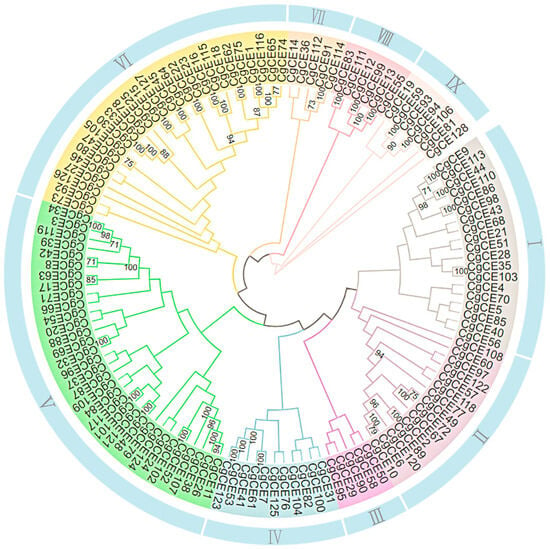
Figure 1
Open AccessArticle
Analysis of Damage Characteristics and Fragmentation Simulation of Soybean Seeds Based on the Finite-Element Method
by
Yuxuan Chen, Zhong Tang, Bin Li, Shiguo Wang, Yang Liu, Weiwei Zhou, Jianpeng Jing and Xiaoying He
Agriculture 2025, 15(7), 780; https://doi.org/10.3390/agriculture15070780 - 3 Apr 2025
Abstract
Soybeans are a crucial crop, and it is therefore necessary to make accurate predictions of their mechanical properties during harvesting to optimize the design of threshing cylinders, minimize the breakage rate during threshing, and enhance the quality of the final product. However, a
[...] Read more.
Soybeans are a crucial crop, and it is therefore necessary to make accurate predictions of their mechanical properties during harvesting to optimize the design of threshing cylinders, minimize the breakage rate during threshing, and enhance the quality of the final product. However, a precise model for the mechanical response of soybean seeds under stress conditions is currently lacking. To establish an accurate finite-element model (FEM) for soybeans that can predict their mechanical behavior under various loading conditions, an ellipsoidal modeling approach tailored for soybeans is proposed. Soybeans harvested in Xinjiang were collected and processed as experimental materials; the average moisture content was 11.77%, there was an average density of 1.229 g/cm³, and the average geometric specifications (height, thickness, and width) were 8.50 mm, 7.92 mm, and 7.10 mm, respectively. Compression tests were conducted on the soybeans in vertical, horizontal, and lateral orientations at the same loading speed to analyze the load and damage stages of these soybeans harvested in Xinjiang. The experimental results indicate that as the contact area decreases, the crushing load increases, with soybeans in the horizontal orientation being able to withstand the highest ultimate pressure. When placed vertically, the soybeans are not crushed; in horizontal and lateral orientations, however, they exhibit varying degrees of breakage. The Hertz formula was simplified based on the geometric characteristics of soybeans, and the elastic moduli in the X, Y, and Z directions of the soybean seeds were calculated as 42.8821 MPa, 40.4342 MPa, and 48.7659 MPa, respectively, using this simplified Hertz formula. A model of the soybeans was created in SolidWorks Ver.2019 and imported into ANSYS WORKBENCH for simulation verification. The simulation results were consistent with the experimental findings. The research findings enhance the understanding of the mechanical behavior of soybean seeds and provide robust scientific support for the optimization of soybean processing technologies and the improvement of storage and transportation efficiency.
Full article
(This article belongs to the Section Agricultural Technology)
►▼
Show Figures

Figure 1
Open AccessArticle
StrawberryNet: Fast and Precise Recognition of Strawberry Disease Based on Channel and Spatial Information Reconstruction
by
Xiang Li, Lin Jiao, Kang Liu, Qihuang Liu and Ziyan Wang
Agriculture 2025, 15(7), 779; https://doi.org/10.3390/agriculture15070779 - 3 Apr 2025
Abstract
Timely and effective identification and diagnosis of strawberry diseases play essential roles in the prevention of strawberry diseases. Nevertheless, various types of strawberry diseases with high similarity pose a great challenge to the accuracy of strawberry diseases, and the recent module with high
[...] Read more.
Timely and effective identification and diagnosis of strawberry diseases play essential roles in the prevention of strawberry diseases. Nevertheless, various types of strawberry diseases with high similarity pose a great challenge to the accuracy of strawberry diseases, and the recent module with high parameter counts is not suitable for real-time identification and monitoring. Therefore, in this paper, we propose a lightweight strawberry disease identification method, termed StrawberryNet, to achieve accurate and real-time identification of strawberry diseases. First, to decrease the number of parameters, instead of standard convolution, a partial convolution is selected to construct the backbone for extracting the features of strawberry disease, which can significantly improve efficiency. And then, a discriminative feature extractor, including channel information reconstruction network (CIR-Net) and spatial information reconstruction network (SIR-Net) modules, is designed for abstracting the identifiable features of different types of strawberry disease. A large number of experimental results were conducted on the constructed strawberry disease dataset, containing 2903 images and 10 common strawberry diseases and normal leaves and fruits. Extensive experiments show that the recognition accuracy of the proposed method can reach 99.01% with only 3.6 M parameters, which have good balance between the identification precision and speed compared to other excellent modules.
Full article
(This article belongs to the Section Crop Protection, Diseases, Pests and Weeds)
►▼
Show Figures
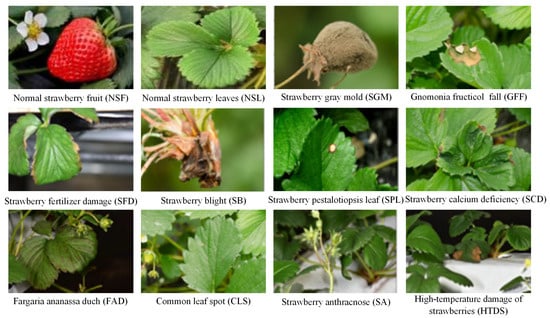
Figure 1
Open AccessArticle
Land Use Rather than Microplastic Type Determines the Diversity and Structure of Plastisphere Bacterial Communities
by
Yangyang Wang, Zixuan Zhang, Shuang Zhang, Wanlin Zhuang, Zhaoji Shi, Ziqiang Liu, Hui Wei and Jiaen Zhang
Agriculture 2025, 15(7), 778; https://doi.org/10.3390/agriculture15070778 - 3 Apr 2025
Abstract
Microplastic (MP) pollution has raised global concerns, and biodegradable plastics have been recommended to replace conventional ones. The “plastisphere” has been considered a hotspot for the interactions among organisms and environments, but the differences in the properties of soil microbial communities in the
[...] Read more.
Microplastic (MP) pollution has raised global concerns, and biodegradable plastics have been recommended to replace conventional ones. The “plastisphere” has been considered a hotspot for the interactions among organisms and environments, but the differences in the properties of soil microbial communities in the plastisphere of conventional and biodegradable MPs remain unclear. This in situ experiment was conducted to compare the diversity and structure of the bacterial community in the plastisphere of conventional MPs (polyethylene [PE]) and biodegradable MPs (polylactic acid [PLA]) in vegetable fields, orchards, paddy fields, and woodlands. It was discovered that the bacterial α-diversity within the plastisphere was significantly lower than that in the soil across all land use. Significant differences between plastic types were only found in the vegetable field. Regarding the community composition, the relative abundances of Actinobacteriota (43.2%) and Proteobacteria (70.9%) in the plastisphere were found to exceed those in the soil, while the relative abundances of Acidobacteriota (45.5%) and Chloroflexi (27.8%) in the soil were significantly higher. The complexity of the microbial network within the plastisphere was lower than that of the soil. Compared with the soil, the proportion of dispersal limitation in the PLA plastisphere significantly decreased, with the greatest reduction observed in the vegetable field treatment, where it dropped from 57.72% to 3.81%. These findings indicate that different land use types have a greater impact on bacterial community diversity and structure than plastics themselves, and that biodegradable MPs may pose a greater challenge to the ecological function and health of soil ecosystems than conventional MPs.
Full article
(This article belongs to the Special Issue Innovative Conservation Cropping Systems and Practices—2nd Edition)
►▼
Show Figures

Figure 1
Open AccessArticle
Mineral Oil Hydrocarbons in Feed: Corn Silage Contamination in a Romanian Dairy Farm
by
Mădălina Matei, Daniel Simeanu and Ioan Mircea Pop
Agriculture 2025, 15(7), 777; https://doi.org/10.3390/agriculture15070777 - 3 Apr 2025
Abstract
This study investigates the presence of mineral oil hydrocarbons (MOHs) in corn silage, aiming to assess contamination levels and identify potential sources, including technological and environmental factors. Given the increasing concern regarding the presence of MOHs all over the food chain, this research
[...] Read more.
This study investigates the presence of mineral oil hydrocarbons (MOHs) in corn silage, aiming to assess contamination levels and identify potential sources, including technological and environmental factors. Given the increasing concern regarding the presence of MOHs all over the food chain, this research provides important data on feed safety. A total of 15 corn silage samples were collected from the feed base of a dairy farm. Sampling was performed systematically across silos (top, middle, bottom layers). The analysis was conducted using LC-GC-FID to quantify mineral oil saturated hydrocarbon (MOSH) and aromatic hydrocarbon (MOAH) fractions. Statistical evaluation was applied to determine contamination patterns and potential influencing factors. The findings confirmed the presence of MOSH and MOAH in the analyzed silage, averaging 23.3 mg/kg MOSH and 1.4 mg/kg MOAH, exceeding European Commission guideline limits. Notably, the MOAH fraction, known for its potential toxicity, was detected at significant levels in several samples. The study highlights that corn silage can act as a source of MOSH/MOAH contamination in livestock feed. Technological processes, especially mechanized harvesting and ensiling, and environmental pollution factors appear to be likely the main contributors, emphasizing the need for improved monitoring and preventive measures to mitigate risks in the feed-to-food chain.
Full article
(This article belongs to the Section Farm Animal Production)
►▼
Show Figures
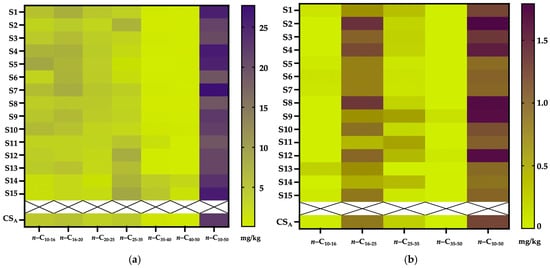
Figure 1
Open AccessArticle
Physico-Mechanical Properties of Male and Female Hemp Plants
by
Hüseyin Duran
Agriculture 2025, 15(7), 776; https://doi.org/10.3390/agriculture15070776 - 3 Apr 2025
Abstract
Hemp (Cannabis sativa L.) is one of the oldest annual fiber crops cultivated throughout human history. Addressing the challenges encountered during the harvesting of hemp for seed and fiber purposes requires further investigation. Studies are also needed to determine plant characteristics in
[...] Read more.
Hemp (Cannabis sativa L.) is one of the oldest annual fiber crops cultivated throughout human history. Addressing the challenges encountered during the harvesting of hemp for seed and fiber purposes requires further investigation. Studies are also needed to determine plant characteristics in terms of both variety and gender. This study aimed to determine the physico-mechanical properties of hemp plants. The stems of male and female hemp plants were divided into three sections along their length: lower, middle, and upper regions. Samples measuring 25.4 mm in length were collected from each section, and measurements of thickness and inner and outer diameter were conducted. The same samples were subjected to axial and lateral compression tests to determine load, elongation, and energy values. According to the results, the thickness of hemp ranged from 2.347 mm to 2.628 mm, the inner diameter varied between 3.986 mm and 4.452 mm, while the outer diameter ranged from 8.861 mm to 9.708 mm. The results showed that male hemp plants have an increase in thickness and inner and outer diameter values from the lower to the upper region compared to female hemp plants. The compressive loads in the axial and lateral directions were found to be higher in male hemp plants compared to female hemp plants. Moreover, elongation and energy requirements during axial and lateral compressions showed trends consistent with the load values across the stem samples. This study determined that the results of axial and lateral compression applied at three different positions (lower, middle, and upper) on male and female hemp stalks varied significantly based on both sex and position.
Full article
(This article belongs to the Special Issue Research Progress on Agricultural Equipments for Precision Planting and Harvesting)
►▼
Show Figures
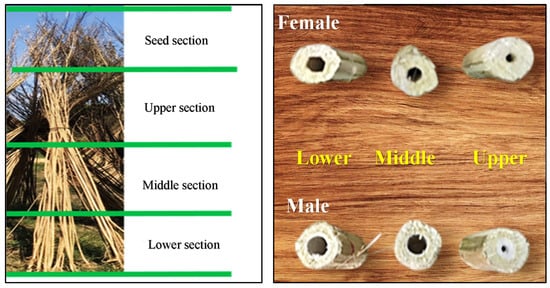
Figure 1
Open AccessArticle
Research on Walnut (Juglans regia L.) Yield Prediction Based on a Walnut Orchard Point Cloud Model
by
Heng Chen, Jiale Cao, Jianshuo An, Yangjing Xu, Xiaopeng Bai, Daochun Xu and Wenbin Li
Agriculture 2025, 15(7), 775; https://doi.org/10.3390/agriculture15070775 - 3 Apr 2025
Abstract
This study aims to develop a method for predicting walnut (Juglans regia L.) yield based on the walnut orchard point cloud model, addressing issues such as low efficiency, insufficient accuracy, and high costs in traditional methods. The walnut orchard point cloud is
[...] Read more.
This study aims to develop a method for predicting walnut (Juglans regia L.) yield based on the walnut orchard point cloud model, addressing issues such as low efficiency, insufficient accuracy, and high costs in traditional methods. The walnut orchard point cloud is reconstructed using unmanned aerial vehicle (UAV) images, and the semantic segmentation technique is applied to extract the individual walnut tree point cloud model. Furthermore, the tree height, canopy projection area, and volume of each walnut tree are calculated. By combining these morphological features with statistical models and machine learning methods, a prediction model between tree morphology and yield is established, achieving prediction accuracy with a mean absolute error (MAE) of 2.04 kg, a mean absolute percentage error (MAPE) of 17.24%, a root mean square error (RMSE) of 2.81 kg, and a coefficient of determination (R2) of 0.83. This method provides an efficient, accurate, and economically feasible solution for walnut yield prediction, overcoming the limitations of existing technologies.
Full article
(This article belongs to the Topic Advances in Smart Agriculture with Remote Sensing as the Core and Its Applications in Crops Field)
►▼
Show Figures

Graphical abstract
Open AccessCorrection
Correction: Wang, M.; Li, T. Pest and Disease Prediction and Management for Sugarcane Using a Hybrid Autoregressive Integrated Moving Average—A Long Short-Term Memory Model. Agriculture 2025, 15, 500
by
Minghui Wang and Tong Li
Agriculture 2025, 15(7), 774; https://doi.org/10.3390/agriculture15070774 - 3 Apr 2025
Abstract
In the original publication [...]
Full article
(This article belongs to the Section Crop Protection, Diseases, Pests and Weeds)
Open AccessArticle
Calibration of Parameters for Leaf-Stem-Cutting Model of Tuber Mustard (Brassica juncea L.) Based on Discrete Element Method
by
Man Gu, Haiyang Shen, Weiwen Luo, Jie Ling, Bokai Wang, Fengwei Gu, Shumin Song, Liang Pan and Zhichao Hu
Agriculture 2025, 15(7), 773; https://doi.org/10.3390/agriculture15070773 - 2 Apr 2025
Abstract
The cutting of leaf stems is a critical step in the mechanized harvesting of tuber mustard (Brassica juncea L.). This study focuses on the calibration of parameters for the discrete element model of mustard leaf stems to visualize the cutting process and
[...] Read more.
The cutting of leaf stems is a critical step in the mechanized harvesting of tuber mustard (Brassica juncea L.). This study focuses on the calibration of parameters for the discrete element model of mustard leaf stems to visualize the cutting process and facilitate numerical simulations. Intrinsic material properties were measured based on mechanical testing, and EDEM2022 simulation software was utilized to calibrate the model parameters. The Hertz–Mindlin (no-slip) model was employed to simulate the stacking angle of mustard leaf stems, and the contact parameters for the discrete element model were determined using a combination of two-level factorial design, steepest ascent, and CCD (central composite design) tests. The results showed that the coefficient of restitution, coefficient of static friction, and coefficient of rolling friction for the leaf stems were 0.45, 0.457, and 0.167, respectively, while for interactions between the leaf stems and the working parts, these values were 0.45, 0.55, and 0.175, respectively. Based on the Hertz–Mindlin with bonding model, the primary bonding parameters were calculated, and a BBD (Box–Behnken design) test was applied for optimization. The comparison between the simulation and experimental results showed that the relative error in the maximum shear force was within 5%, indicating that the calibrated model can serve as a reliable theoretical reference for the design and optimization of tuber mustard harvesting and cutting equipment.
Full article
(This article belongs to the Section Agricultural Technology)
►▼
Show Figures
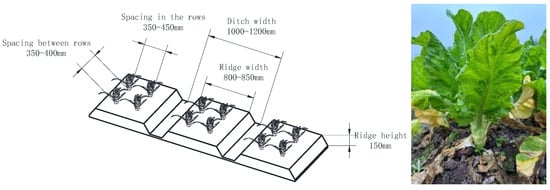
Figure 1
Open AccessArticle
The Impact of Dissolved Biochar on Oxidative Stress and Its Effect on the Virulence of Steinernema feltiae: Implications for Biocontrol Efficiency
by
Xinrui Wang, Jie Li, Jing Li, Lan Luo, Gang Li, Weibin Ruan and Guilong Zhang
Agriculture 2025, 15(7), 772; https://doi.org/10.3390/agriculture15070772 - 2 Apr 2025
Abstract
Dissolved biochar (DBC) can make a significantly impact on soil ecosystems and the associated biota due to its high environmental bioavailability. However, the impact of DBC on the adaptability of entomopathogenic nematodes (EPNs), such as Steinernema feltiae, remains uncertain. This study investigates
[...] Read more.
Dissolved biochar (DBC) can make a significantly impact on soil ecosystems and the associated biota due to its high environmental bioavailability. However, the impact of DBC on the adaptability of entomopathogenic nematodes (EPNs), such as Steinernema feltiae, remains uncertain. This study investigates the impact of DBC on oxidative stress, antioxidant enzyme activity, virulence, and gene expression in EPNs through culture assays and RNA-seq analysis. Results showed that DBC exposure significantly increased the accumulation of reactive oxygen species (ROS) accumulation. The nematodes treated with DBC700 exhibited 64.34% higher ROS levels, while those treated with DBC400 had 51.13% higher levels compared to the control. Superoxide dismutase (SOD) and catalase (CAT) activities were significantly suppressed, with a stronger inhibition observed in the DBC700 group. As revealed by virulence assays, DBC treatment reduced the infectivity of EPNs against Galleria mellonella larvae. Transcriptome analysis revealed that DBC primarily affected oxidative stress response, membrane transport, and longevity regulation pathways. Moreover, DBC400 predominantly inhibited carbohydrate metabolism, whereas DBC700 significantly impacted oxidative metabolism, protein processing, and neuronal signaling pathways, suggesting the presence of distinct metabolic adaptation mechanisms between the two DBCs. Overall, this study suggests that DBC may impair the biocontrol efficacy of S. feltiae through oxidative stress and genetic perturbations, providing new insights into its long-term ecological impacts on soil ecosystems.
Full article
(This article belongs to the Special Issue Biochar Applications in Agricultural Soil Restoration)
►▼
Show Figures
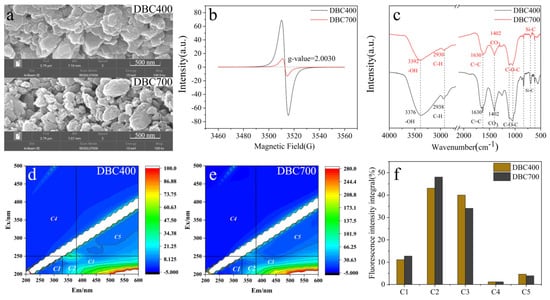
Figure 1
Open AccessArticle
Real-Time Caterpillar Detection and Tracking in Orchard Using YOLO-NAS Plus SORT
by
Sumesh Nair, Guo-Fong Hong, Chia-Wei Hsu, Chun-Yu Lin and Shean-Jen Chen
Agriculture 2025, 15(7), 771; https://doi.org/10.3390/agriculture15070771 - 2 Apr 2025
Abstract
Detecting and tracking caterpillars in orchard environments is crucial for advancing precision agriculture but remains challenging due to occlusions, variable lighting, wind interference, and the need for precise small-object detection. This study presents a real-time deep learning approach that integrates the YOLO-NAS object
[...] Read more.
Detecting and tracking caterpillars in orchard environments is crucial for advancing precision agriculture but remains challenging due to occlusions, variable lighting, wind interference, and the need for precise small-object detection. This study presents a real-time deep learning approach that integrates the YOLO-NAS object detection model with the SORT tracking algorithm to overcome these challenges. Evaluated in a jujube orchard, the proposed method significantly improved small caterpillar detection and tracking. Using an RGB-D camera operating at 30 frames per second, the system successfully detected caterpillars measuring 2–5 cm at distances of 20–35 cm, corresponding to resolutions of 21 × 6 to 55 × 10 pixels. The integration of YOLO-NAS with SORT enhanced detection performance, achieving a ~9% increase in true positive detections and an ~8% reduction in false positives compared to YOLO-NAS alone. Even for the smallest caterpillars (21 × 6 pixels), the method achieved over 60% true positive detection accuracy without false positives within 1 s inference. With an inference time of just 0.2 milliseconds, SORT enabled real-time tracking and accurately predicted caterpillar positions under wind interference, further improving reliability. Additionally, selective corner tracking was employed to identify the head and tail of caterpillars, paving the way for future laser-based precision-targeting interventions focused on the caterpillar head.
Full article
(This article belongs to the Section Digital Agriculture)
►▼
Show Figures

Figure 1
Open AccessArticle
Investigating the Impact of Sowing Date on Wheat Leaf Morphology Through Image Analysis
by
Junfan Chen, Jianliang Wang, Jiacheng Wang, Zhian Wang, Lihan Zhao, Yaohua Yan, Jiayue Li, Hanzeyu Xu, Chengming Sun and Tao Liu
Agriculture 2025, 15(7), 770; https://doi.org/10.3390/agriculture15070770 - 2 Apr 2025
Abstract
The morphology of wheat leaves is a key indicator of crop stand quality and photosynthetic capacity, with sowing date being a critical factor influencing leaf morphology. To investigate the effects of sowing time on wheat growth, development, and leaf phenotypes, this study utilized
[...] Read more.
The morphology of wheat leaves is a key indicator of crop stand quality and photosynthetic capacity, with sowing date being a critical factor influencing leaf morphology. To investigate the effects of sowing time on wheat growth, development, and leaf phenotypes, this study utilized image analysis technology to systematically extract key phenotypic traits of winter wheat leaves, including effective leaf area, leaf color, and leaf shape. The results demonstrated that delayed sowing significantly affected the morphology and color characteristics of winter wheat leaves. Specifically, leaf length and width exhibited a quadratic decreasing trend, resulting in an average reduction in leaf area of over 59%. Additionally, the greenness index (EXG) decreased by 25.84%, while the red pigment index (EXR) increased by 21.69%. Significant differences in leaf color changes were observed among the varieties. This study provides reliable data for determining the optimal sowing period for winter wheat and offers valuable guidance for optimizing field management strategies to enhance crop yield and quality.
Full article
(This article belongs to the Special Issue AI-Powered UAVs and Imaging Systems for Precision Wheat and Rice Management)
►▼
Show Figures
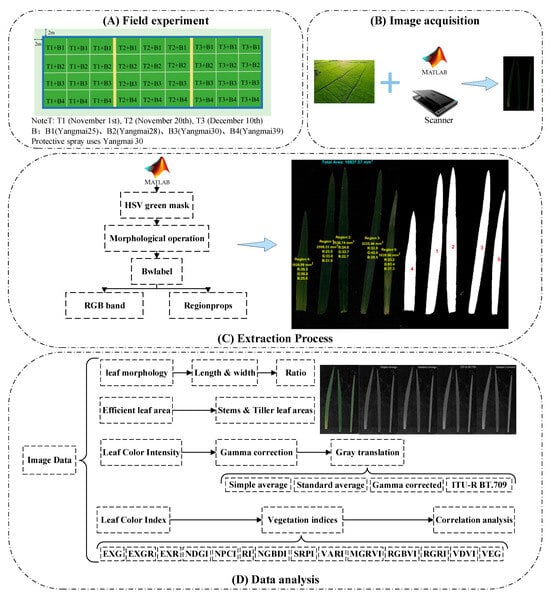
Figure 1

Journal Menu
► ▼ Journal Menu-
- Agriculture Home
- Aims & Scope
- Editorial Board
- Reviewer Board
- Topical Advisory Panel
- Instructions for Authors
- Special Issues
- Topics
- Sections
- Article Processing Charge
- Indexing & Archiving
- Editor’s Choice Articles
- Most Cited & Viewed
- Journal Statistics
- Journal History
- Journal Awards
- Conferences
- Editorial Office
Journal Browser
► ▼ Journal BrowserHighly Accessed Articles
Latest Books
E-Mail Alert
News
Topics
Topic in
Agriculture, Crops, Horticulturae, Remote Sensing, Sensors, Agronomy
Intelligent Agriculture: Perception Technologies and Agricultural Equipment for Crop Production Processes
Topic Editors: Chenglin Wang, Lufeng Luo, Juntao Xiong, Xiangjun ZouDeadline: 30 April 2025
Topic in
Agriculture, Animals, Fermentation, Microplastics, Veterinary Sciences
Livestock and Microplastics
Topic Editors: Sonia Tassone, Beniamino T. Cenci-GogaDeadline: 20 May 2025
Topic in
Animals, Antioxidants, Veterinary Sciences, Agriculture
Feeding Livestock for Health Improvement
Topic Editors: Hui Yan, Xiao XuDeadline: 30 May 2025
Topic in
Agriculture, Agronomy, Horticulturae, Plants
Optimizing Plants and Cultivation System for Controlled Environment Agriculture (CEA)
Topic Editors: Linxuan Li, Yongming Liu, Xiumei Luo, Maozhi Ren, Xiulan Xie, Jie HeDeadline: 3 July 2025

Conferences
Special Issues
Special Issue in
Agriculture
Soil Amendment and Pollution Remediation: Creating a Better Soil Environment for Future Sustainable Agricultural Production
Guest Editors: Paula Pérez-Rodríguez, Vanesa Santás-MiguelDeadline: 10 April 2025
Special Issue in
Agriculture
Advanced Image Collection, Processing, and Analysis in Crop and Livestock Management
Guest Editors: Weizhen Liang, Jingqiu ChenDeadline: 15 April 2025
Special Issue in
Agriculture
Molecular Breeding Approaches to Improve Agronomic Traits and Stress Resistance in Cereals
Guest Editors: Mingming Yang, Sachin RustgiDeadline: 15 April 2025
Special Issue in
Agriculture
The Application of Near-Infrared Spectroscopy in Agriculture—2nd Edition
Guest Editors: George Bazar, Tamás TóthDeadline: 20 April 2025





